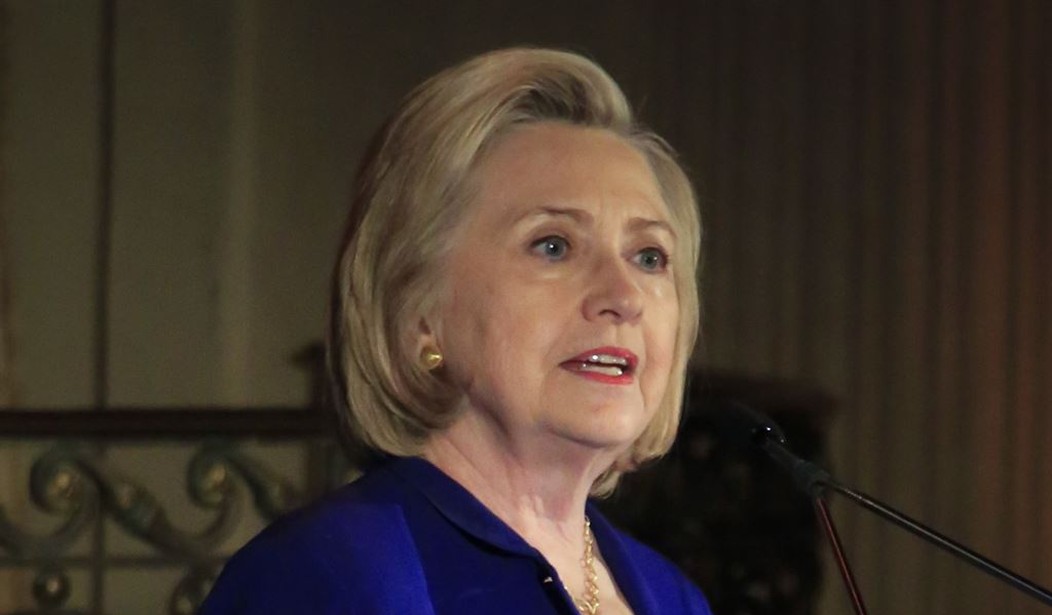Why did Clinton do it?
I realize that a question like that needs to be a lot more specific, so let's try again.
Why did Hillary Clinton tweet this on Wednesday?:
"I want to be sure we're all clear about something that Brett Kavanaugh said in his confirmation hearings last week. He referred to birth-control pills as 'abortion-inducing drugs.' That set off a lot of alarm bells for me, and it should for you, too."
She prattled on a bit more about how Kavanaugh deliberately distorted "basic science" to offer a "dog whistle to the extreme right."
There was a hitch, though.
This claim -- that Supreme Court nominee Brett Kavanaugh considers birth control pills to be "abortion-inducing drugs" -- had been widely debunked when California Sen. Kamala Harris tried to peddle it with a deceptively edited video.
Kavanaugh had been describing the views of specific plaintiffs in a specific case, Priests for Life v. HHS. "It's pretty clear from the context," The Washington Post's fact-checker, Glenn Kessler, wrote "that he was quoting the views of the plaintiffs rather than offering a personal view." He gave Harris four Pinocchios -- the worst rating.
Even PolitiFact, which often bends its findings to fit a liberal narrative, ruled that the characterization was dishonest.
So why did Clinton jump on the bandwagon so late?
There are many plausible theories. A common one is that she deliberately lied to pander to her base and further unfairly demonize Kavanaugh. Or perhaps she hasn't been paying attention and her staff is so incompetent that no one bothered to do their due diligence. (Indeed, she may not have tweeted it herself. Some 22-year-old intern may be responsible).
Any of these are possible. But something else may be at work. One of the dominant features of our time is that more and more people define themselves by what they hate. For many partisans, what motivates them the most isn't support for their side's policies but their hatred of the other party. Most Republicans didn't vote for Donald Trump; they voted against Hillary Clinton. Most Democrats didn't vote for Clinton; they voted against Trump.
Recommended
This dynamic doesn't just apply to presidential candidates. It saturates both parties and both sides of the culture war, and it even distorts how we process basic facts. The Proceedings of the National Academy of Sciences just came out with a report on how people will misinterpret objective data -- in this case on climate change -- if there's any hint that the data came from a Republican or Democratic source. The moment Democrats saw a Republican logo, the ability to interpret a chart went out the window for many of them, and vice versa.
In a media climate where every news outlet is essentially a niche product, appealing to a relatively small slice of the market, one of the best ways to get attention and support is to be attacked by the other side.
This is the broader context for the often-lucrative vocation commonly known as "trolling." Say or do something awful to get the other side to attack you, and your own side will rush to your support on the grounds that if you're making the right people angry, you're a hero.
"We need more Americans to understand exactly this phenomenon," Nebraska Sen. Ben Sasse told me on my podcast, The Remnant. Cable news producers and magazine editors have told Sasse that there's "no chance in hell that you're getting a 70 percent audience from anything anymore. What you want is a deep and sticky 1 percent audience. And one of the most effective ways to do that ... is by getting attacked, because you draw visibility to yourself."
Sasse pointed to The New Yorker's almost conspiratorial "expose" of Chik-fil-A's "creepy infiltration" -- in the magazine's words -- of New York City. The magazine has done "some really important work, not just in its history, but this year," Sasse said, yet "they put out "these nonsensical, scurrilous pieces."
"I think that the motive is to get attacked from the other side, so you can now wear the victim badge of honor, and then other people who are in your base then rally to you as a second-order effect."
This dynamic is everywhere today, particularly in the president's Twitter feed -- and in the Twitter feeds of various Democrats who'd like to replace him.
Again, I don't know if this explains Clinton's tweets about Kavanaugh -- conventional laziness, incompetence and dishonesty are reasonable guesses, too -- but Sasse is surely correct that more Americans need to appreciate this phenomenon.

























Join the conversation as a VIP Member